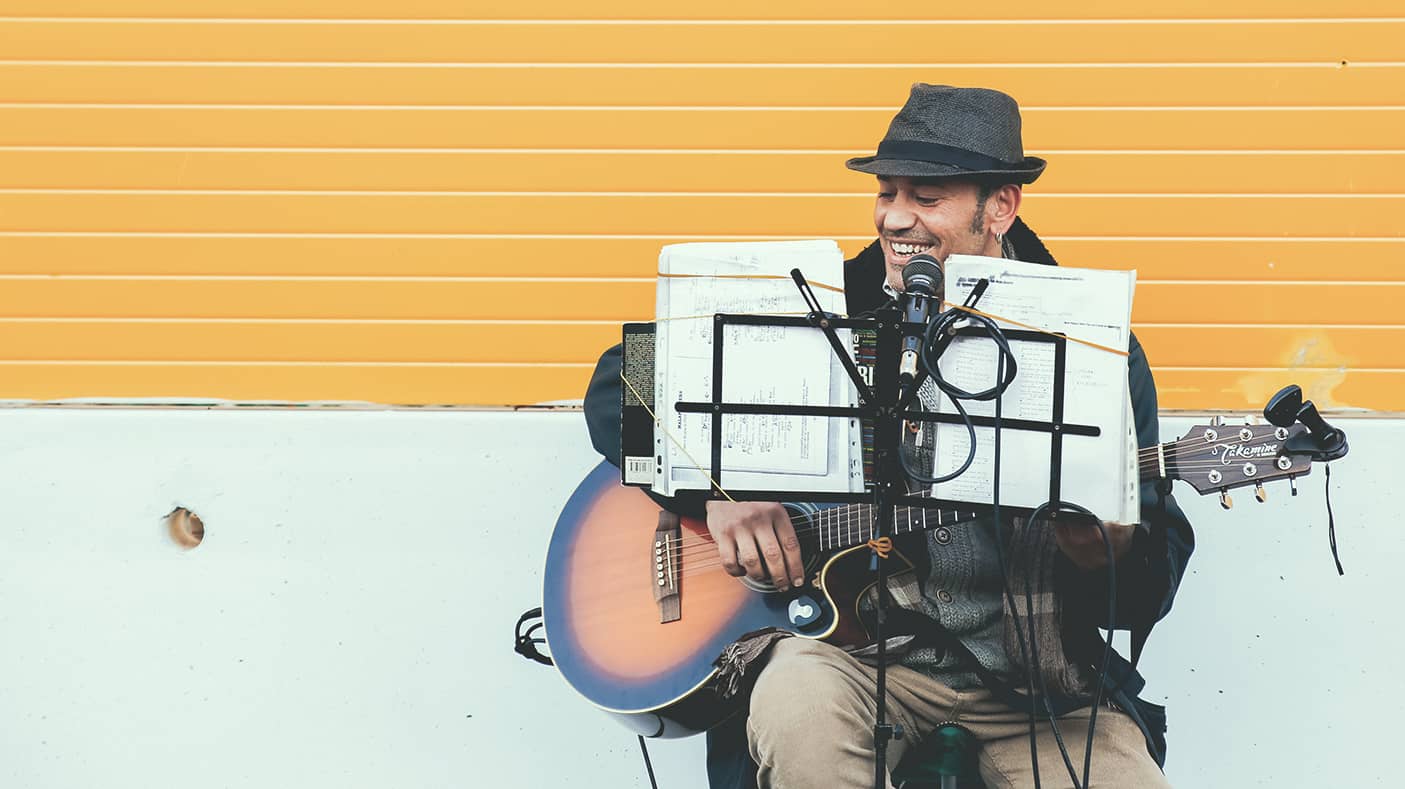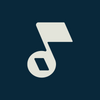How To Read Guitar Tabs & Chord Diagrams

The guitar continues being one of the most desired instruments to master, but many beginner musicians are unsure of how to get started. Luckily, learning to shred the strings isn’t as hard as one imagines—thanks to guitar tabs.
The good news? You don’t need to be literate in traditional sheet music to use a tablature score.
The tricky part? Learning how to read guitar tabs does require a general knowledge of music, rhythm, and sight reading, but there’s no need to fret! Musicnotes is here help you with everything you need to know about the basics of reading guitar tabs.
What is Tab?
Tablature (or tab) is a type of sheet music scoring specifically designed to help guitarists and bassists quickly learn how to play their favorite songs.
- Tab helps associate fret positions with the notes on the staff.
- Tab provides annotation on the way the notes are expressed.
Think of guitar tabs as the condensed version of guitar playing: You’ll learn where to position your fingers to play the notes, but the rhythm and timing is excluded from the musical piece.
How Does Guitar Tab Work?
Staffs
We’ve chosen to use Ben E. King’s “Stand By Me” scored for guitar tab as an example. You may notice right away that the music has two staffs:
-
- A standard treble clef on top
- Another staff with more lines and numbers instead of notes
The staff below the treble clef is the tab.

Tab Lines
A tab staff will always have the same number of lines as your instrument has strings. So, a six-string guitar will have six lines, and a four-string bass will have four lines.
- A lower line means a lower note. On the tab staff, the bottom line is the lowest (or 6th) string of the guitar.
- The strings simply proceed higher on the guitar as they do in the tab staff.
- The number on the line corresponds to the fret (note) to be played.
Examples:
- When you see the first note of ‘Stand By Me’ is a 2 on the middle line, you will know to play the 2nd fret on the G string for one eighth note.
- The second note shows a 0 on the 2nd line, which tells us to play the open B string for another eighth note.
Numbers stacked on top of one another are to be played at the same time, as in the fourth note of the song in measure 2.

© 1961 Sony/ATV Music Publishing LLC
Using Tab to Learn Chords
As you become more familiar with reading guitar tabs, you can easily learn how to read guitar chords. You’ll notice on some guitar tabs, chord names are written above the measures and chord diagrams are provided generally on the first page (like on the tab for “Stand by Me”).
- When a chord is written at the start of a measure, it usually implies the overall harmony for any notes actually being shown from that point on.
- All of the notes played in measures 2 and 3 are in the chord ‘C’ (C Major).

© 1961 Sony/ATV Music Publishing LLC
How Do Chord Diagrams Work?
If you want to know just how to play the chord ‘C,’ take a look at the diagrams provided at that start of the song and find the diagram underneath the chord name. This will show the exact frets and strings to play when strumming a full chord.

- The left-most string is the lowest string of the guitar.
- The strings ascend as you move left to right just as the frets ascend as you move top to bottom.
- Notice the ‘O’s above the 1st and 3rd strings. These tell you that the associated string is played open.
- When you see an ‘X,’ like the one above the 6th string, be sure that this string is not played.
The dots on the remaining strings tell you which frets to hold when you strum the chord. In the above example, you’ll play:
- the 3rd fret on the A string
- the 2nd fret on the D string
- the 1st fret on the B string
Make sure to also strum the two open strings! Doing so will provide you with all the notes needed to successfully play the C Major chord.
What Do the Symbols Mean?
Tabs use a variety of symbols to help the player know how and when to add expression to what is being played. The most common symbols are slides, pull-offs (hammer-ons) and bends.

Slides
If you see this symbol between two notes in a tab, it means that you will slide your finger along the fretboard toward the next note instead of stopping the note when the duration is over as normal. Slides may be done up or down the neck and even performed on chords. Sliding provides a simple yet effective way of adding expression when playing.
Pull-off
A Pull-off occurs between two or more descending notes. When you see this written, be sure to pick only the first note and then lift your fingers off the fretboard in succession for each additional note in the pull-off. No additional picking is performed through the rest of a pull-off.
Hammer-on
Much like a pull-off, a hammer-on occurs between two or more ascending notes. Instead of lifting a finger off a fret you will pick the first note and then “hammer” your next finger down onto the next fret causing the note to sound. No additional picking is performed through the rest of a hammer-on. A passage may include both a hammer-on and pull-off.
Bend
A bend occurs when a note is picked and then the fretting hand is used to bend the string and slightly raise the pitch. How far and long the string is bent can be just as important as any note in a song. Typically, a bend will be described as being a ¼ or ½, letting you know just how far to raise the pitch. A subtype of a bend is the release bend, which requires the string to be returned to the ‘unbent’ position after the bend.

For more symbols, check out our free guide: Common Guitar TAB Symbols
Other Guitar Tab Vocab
Capo
A capo is a tool used by guitarist to quickly alter the key which sounds from the guitar. A capo will raise the key but not change the fingering in which chords are performed, making it a quick way to transpose a song.
For an example, let’s take a look at Jeff Buckley’s guitar tab version of ‘Hallelujah.’ Locate the “Capo V” note at the top left of the score.

- This means that a capo is placed across the fifth fret of the guitar.
- You will play the chords with the same fingering as you would without the capo, but now the fifth fret is considered “0” (zero) and is effectively the beginning of the guitar’s frets.
- In the fourth measure, the chord played has the same fingering as Em but the notes actually sound an Am chord due to the Capo V position.

© 1995 Sony/ATV Music Publishing LLC
Tuning
Tuning is very important to note when playing tab, as the song may not always be written for standard tuning. Alternate tuning can also change the fingering of chords. However, like a capo, tuning is sometimes used to achieve an overall change in pitch without changing fingerings.
For an example, take a look at Jimi Hendrix’s guitar tab version of “Crash Landing.”
- Note that the tuning is described as “down a ½ step,” followed by a guide to show what each strings destination should be.
- In this example, all strings are detuned down one half-tone. This leaves all chords with same relative sound.

- Even though the chord at measure 5 is described as B7, the actual notes that sound are the notes of a Bb7 chord due to our detuned guitar.
- However, because all strings have been tuned the same distance, for the sake of playability, we can use the implied chord names when displaying the harmony.

© 1975 Experience Hendrix LLC
Now that you know how to read tabs, all that’s left to do is start playing! Be sure to check out all of the simple guitar tab offerings at Musicnotes, including rock essentials, modern hits, and so much more. Happy playing, Guitar Guru!
More Blog Posts Related to Guitars
- How to Choose, Tune, & Play Your First Guitar: Beginner Tips
- How to Choose Your First Acoustic Guitar (Do’s and Don’ts)
- What’s the Best Option for Beginner Guitarists – An Acoustic or Electric Guitar?
- Guitar Buying Guide: What To Know Before You Buy an Acoustic or Electric Guitar
- Best Guitar Tips For 2023
- Guitar Maintenance: How To
- Rockabilly Chord Progression
- Iconic Guitar Parts In Movie Soundtracks
- Spread Your Wings: The 9 Best Paul McCartney Songs to Learn on Guitar
- Tips & Tricks to Master Bruce Springsteen's Guitar Techniques
- Alternate Picking Techniques

